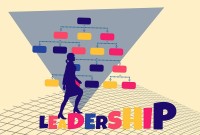- Home
- Business Processes
- Industry Knowledge
- Aerospace Industry
- Automotive Industry
- Banking Domain
- BFSI Industry
- Consumer/ FMCG Industry
- Chemicals Industry
- Engineering & Construction
- Energy Industry
- Education Domain
- Finance Domain
- Hospitality Domain
- Healthcare Industry
- Insurance Domain
- Retail Industry
- Travel and Tourism Domain
- Telecom Industry
- Leadership Skills
- eLearning
- Home
- Leadership Skills
- Communication Skills
- Directive Leadership Style
Directive Leadership Style
This style is characterized by leaders making decisions for others and expecting followers to follow instructions. The directive leader is adept at giving instructions, setting expectations, and establishing timelines and performance standards. However, it is possible for the same leaders to display both directive and supportive behavior as per the demands of the situation.
What is Directive Leadership?
This style is an autocratic style focused on the high task/low relationship. The leader defines the roles of followers and tells them what, when, where, and how to do different tasks. One way communication flows from the leader to the followers. Leaders tell their people exactly what to do, and how to do it. In this approach, the leader focuses his interactions with followers on goal achievement and spends a smaller amount of time using supportive behaviors. Task behavior reflects how much a leader is concerned with the actual task at hand and ensuring that those following him complete it. Using this style, a leader gives instructions about what and how goals are to be achieved by the subordinates and then supervises them personally.
Activities associated with directive behavior are guiding and structuring followers’ activities, planning, scheduling, and assigning responsibilities, defining roles and communication patterns for followers, motivating and conveying expertise, monitoring and following up on assignments, clarifying expectations, goals, and work methods. Transformational leaders can be directive or participative, authoritarian, or democratic based on the demands of the situation.
Characteristics of Democratic Leadership:
- Directive behaviors help followers accomplish goals by getting clear directions, establishing their goals and objectives, evaluation criteria, timelines, roles, responsibilities, and specific sub-tasks to achieve the goals.
- A directive leader sets clear standards of performance and makes the rules and regulations clear to subordinates.
- Being directive ensures accuracy and eliminates time-consuming mistakes
- Rewards may also be increased as needed and role ambiguity decreased (by telling them what they should be doing).
Situations where Effective:
- This may be used when the task is unstructured and complex and the follower is inexperienced.
- From the follower’s perspective, this kind of behavior provides role clarity, clear expectations, satisfaction with work and supervisor, satisfaction with the organization, lower stress, and increased performance.
- This style is used at length within the law enforcement and military communities as well as on manufacturing assembly lines, providing a means of managing a diverse group of people that span a wide range of experience and maturity levels.
- This style is generally appropriate for professionals who are in the early stage of their career and need to learn organizational behaviors.
- This increases the follower's sense of security and control and hence is appropriate to the situation.
Situations where Not Effective:
- The directive leader usually aims to restrict or limit the creativity or initiative of the follower.
- This style of leadership avoids collaborating or empowering others
- Directive behaviors are most of the time is one-way communication that specifies what is to be done and the task can be accomplished and assigning the responsibility for doing it.
Related Links
You May Also Like
-
Authentic leadership is an approach to leadership that emphasizes building the leader's legitimacy through honest relationships with followers which value their input and are built on an ethical foundation. The authentic leader acts upon his or her values and beliefs, and inspires others to do the same, is committed to know and develop oneself. Are you committed to developing yourself; know your motivations and the purpose of your leadership? Read this article to know more about authentic leadership style and discovering your authentic self.
-
Crisis leadership is a very important part of leading in today's world. The skills a leader needs in order to guide people during a crisis are different from the skills needed to help a group grow. Are you a good crisis leader? What is your leadership style in case of a business crisis situation? A business crisis can test the strongest of leaders, read this article to explore how to ensure you’re ready to take action and weather the storm when one strikes you.
-
Narrative leadership is interpreted as the leader who aspires to construct leadership by telling stories. Leadership is a task of persuasion, of winning people’s minds and hearts. Storytelling is thus inherently suited for the task of leadership. Learn about the narrative leadership style and how to use this style to inspire and motivate followers or to manage change.
-
Have you ever resonated that there seem to be as many different ways to lead people as there have been great leaders? When we recall the success of Mahatma Gandhi, Nelson Mandela, Abraham Lincoln, Napoleon Bonaparte to Steve Jobs and Jack Welch, we also notice that they all used different approaches that were suitable to their specific situations and circumstances. Over the last century, researchers and psychologists have developed simple ways to describe the “Styles of leadership” and in this section, we will explore these commonly known leadership styles.
-
Bureaucratic leadership relies on a clear chain of command and strict regulations. Bureaucratic leadership style is a very decent style for work involving serious safety risks, such as handling toxic substances, moving large objects. The focus is on compliance with rules and laid down procedures to make sure that the group is doing their job correctly and safely. Learn some advantages and disadvantages of this style and situations in which this style could prove to be effective.
-
There are four major factors in leadership called Leader, Follower, Communication, and Situation. The success of the leader is dependent on how the leader is effectively able to communicate and motivate followers to perform desired tasks using the appropriate leadership style best suited for the given situation. Interdependencies and dynamics of these four factors of leadership must be considered by a leader to be effective.
-
Emergent leadership occurs when a group member is not appointed or elected as leader, but rather that person steps up as the leader over time within-group interactions. Have you ever faced challenges in getting accepted into your new role of position as a leader? Groups don't automatically accept a new "boss" as a leader. Emergent leadership is what you must do when taking over a new group. Learn more about emergent leadership.
-
Facilitative Leadership is all about involving the employees in the decision-making process at all levels enhancing their sense of ownership, responsibility, and motivation. Facilitative leadership style uses a number of indirect communication patterns to help the group reach consensus and build commitment for the decision taken. To be effective in modern organizations, managers need to become facilitative leaders, learn what it means to be a one.
-
“Level 5 Leadership”, this term was coined by Jim Collins in his book “Good to Great” and it is all about achieving "Greatness" as a leader. This article will explain what we mean by Level 5 Leadership and what the characteristics of a Level 5 leader are. What it takes to achieve greatness as a leader, and what are the steps and strategies that one can use to move up to this top level of leadership.
-
Frederick Winslow Taylor started the “Scientific Management Movement”, and attempted to study the work process scientifically. Scientific management, also called Taylorism, was a theory of management that analyzed and synthesized workflows. It is a system for increasing the efficiency of manpower to its maximum potential and streamlining production to improve efficiency. This article explores this theory in more detail.
Explore Our Free Training Articles or
Sign Up to Start With Our eLearning Courses

About Us
Learning
© 2023 TechnoFunc, All Rights Reserved










